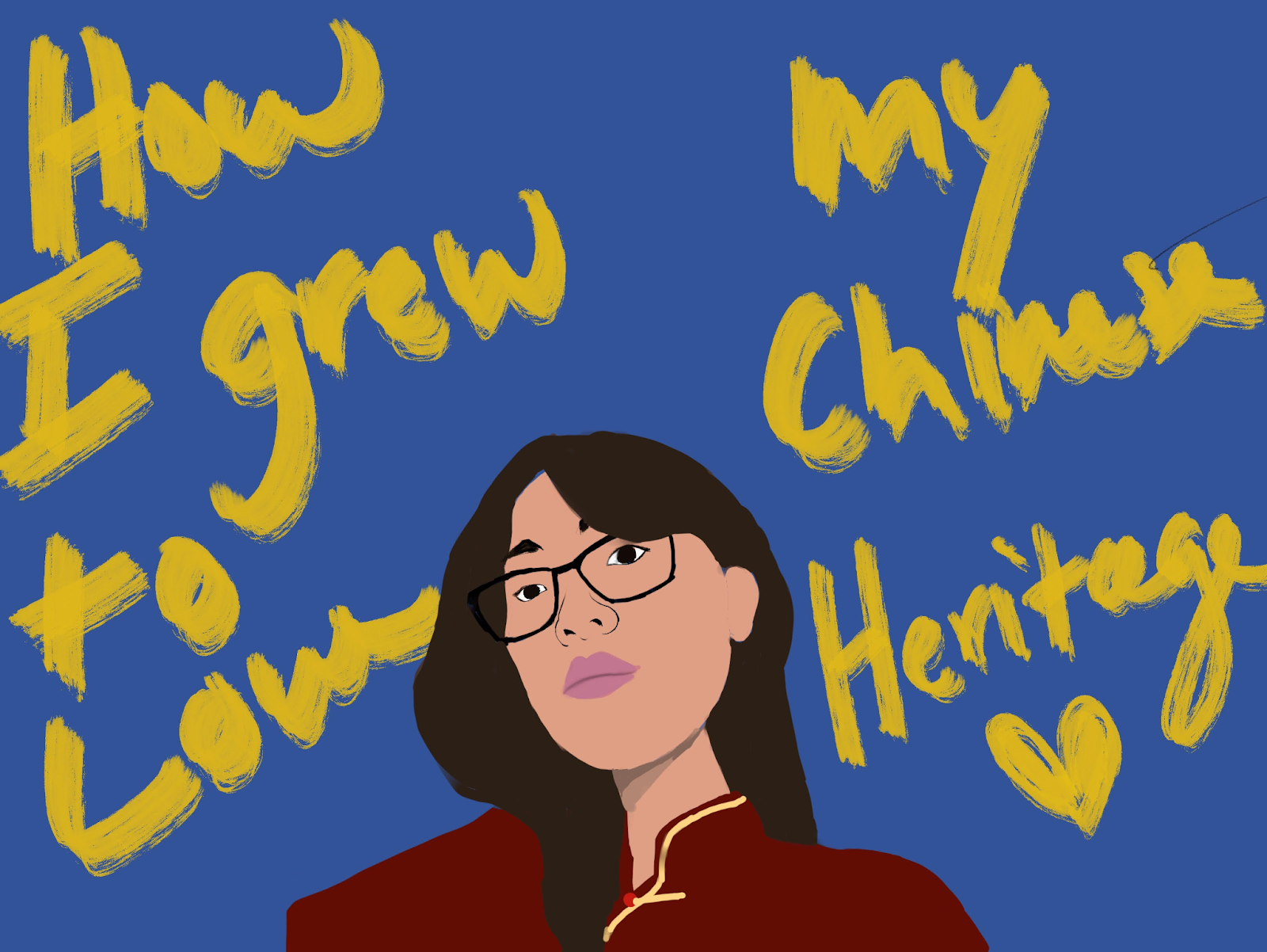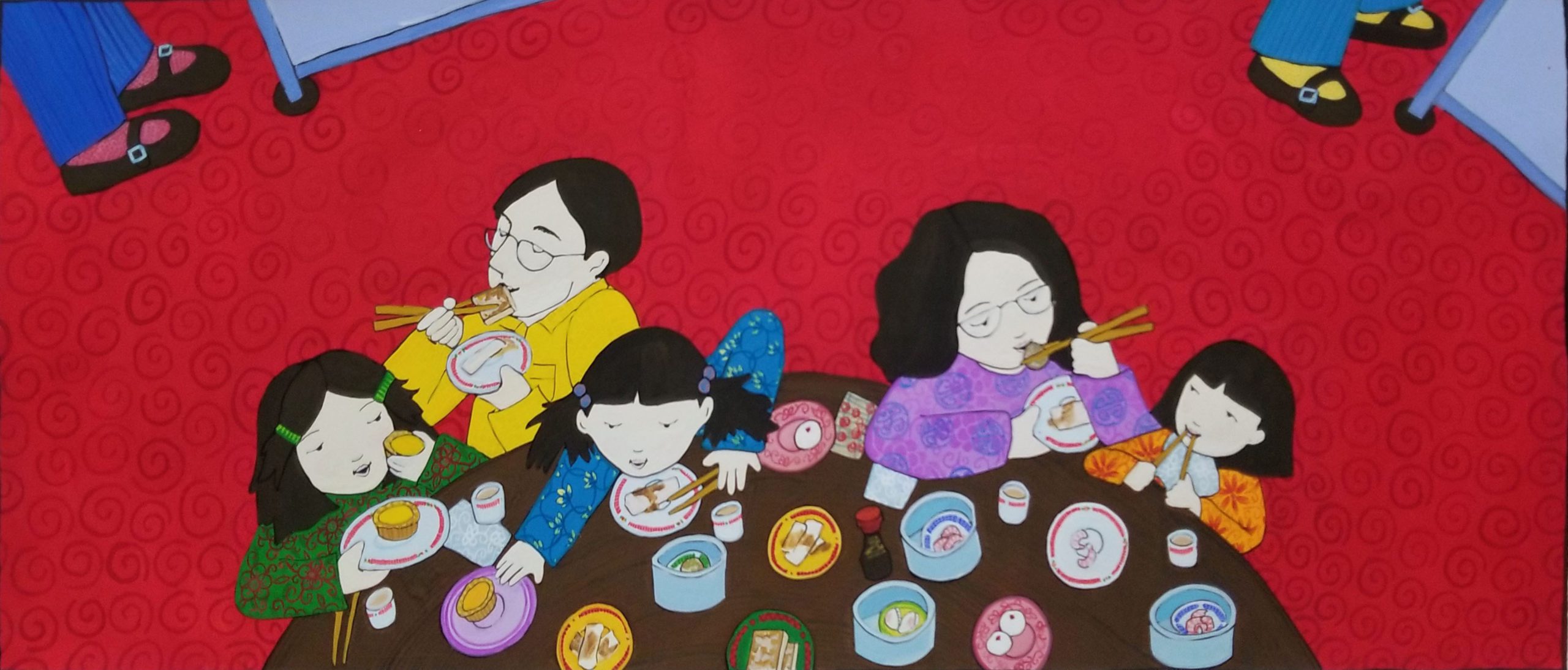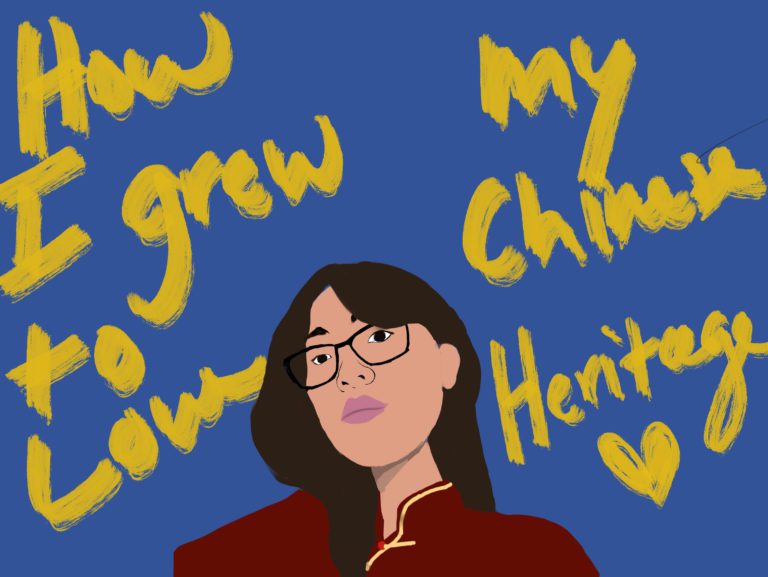 Art by Adriane Kong
Art by Adriane Kong
Growing up as an Asian-American in a predominantly white town, I often felt out of place.
Both my parents were immigrants, so I was raised around Asian culture. I spoke Cantonese at home, ate white rice with every meal, and hung up red banners with auspicious affirmations during Lunar New Year.
I hoarded plastic bags, bowed to my elders, and most importantly never wore my shoes in the house.
It didn’t take me long to realize that the other kids in my elementary school didn’t do those things. I was the odd one out because of my cultural differences. Kids eyed my shrimp chips during snack time and gagged at my fried bell pepper fishcakes at lunch. They were kids; they may not have known better. But I was a kid too, and the message instilled in me was “You don’t belong.”
 Dim Sum for Everyone by Grace LinFrom then on, I did my best to fit in. I didn’t want the nutritious homemade lunches my 阿姨 (Āyí, aunt) made for me. I wanted frozen pizza and reheated chicken nuggets from the school’s cafeteria, just so I could be a little more like everyone else.
Dim Sum for Everyone by Grace LinFrom then on, I did my best to fit in. I didn’t want the nutritious homemade lunches my 阿姨 (Āyí, aunt) made for me. I wanted frozen pizza and reheated chicken nuggets from the school’s cafeteria, just so I could be a little more like everyone else.
Nevertheless, after all that internalized racism and the suppression of my own identity, at the age of 20, I have finally embraced my Chinese heritage.
[zombify_post]


0 Comments